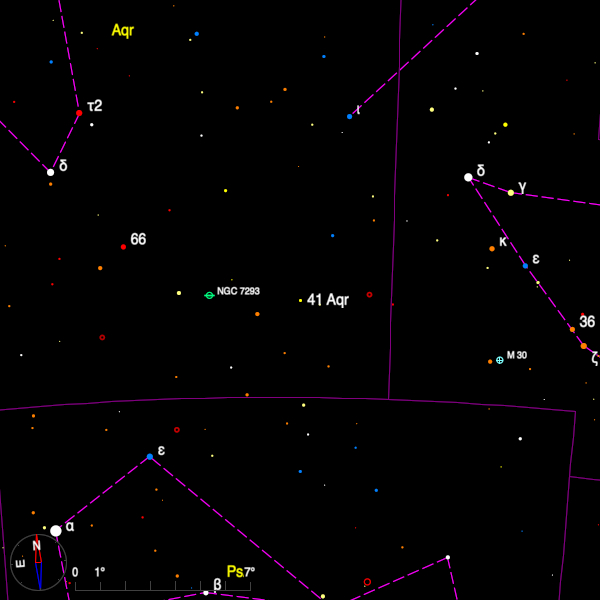October 2023 - Double Star of the Month
About 15 degrees north of the centre of the Square of Pegasus is a relatively sparse region of stars but it does contain some interesting doubles. Near the south end of this space is STF 3050 (see this column for October 2016) whilst four degrees further north and slightly preceding is STF 3042 (23 51 52.409 +37 53 28.4) which consists of stars with magnitudes 7.6 and 7.8 and which are currently 6" apart at PA 87 degrees. I found them to be a delightful pair of yellow stars
whilst the entry in Sissy Haas' volume notes them as an easy white pair
.

They likely form a long period binary as Gaia DR3 notes that the parallaxes differ by just 0.009 milli-arcsecond. The stars lie 226 light-years away and both appear white, but are contrasted against an orange star 3' to the south-east. Unrelated to STF 3042 this is the long period variable candidate V 397 And (V = 8.9) which was picked up by Hipparcos. The listed amplitude is just 0.03 magnitude, and the spectral type is M5.
Move 2.5 degrees west and slightly south to find the unequal pair STT 501. The stars are 6.5 and 10.6 and have PA 162 degrees and separation 15".
41 Aqr (22 14 18.02 -21 04 28.9) sits four degrees north of the Aquarius—Piscis Austrinus border and is just four degrees west of NGC 7293 the Helix Nebula.

It is number 56 in William Herschel's third double star list and is an easy pair for the small aperture. The stars have magnitudes 5.6 and 6.7 and the primary is a KO giant; a rather ambiguous note in the Washington Double Star catalog (WDS) implies that it has a composite spectrum which is strengthened by the fact that Gaia DR3 quotes an error in the parallax about three times higher than might be expected for a star of this magnitude. The stars have similar parallaxes and proper motions and as the parallax of the companion is more precise then both stars must lie 239 light-years away.
This is a pretty pair; Smyth recorded colours of topaz yellow and cerulean blue whilst Webb noted reddish and blue and Sissy Haas yellowish-peach and pale violet.
The WDS also notes two more distant and unrelated field stars: an 8.9 at 45 degrees and 210" (C) with another fainter object of V = 11.6 12" away from C in PA 255 degrees.
Bob Argyle - Double Star Section Director